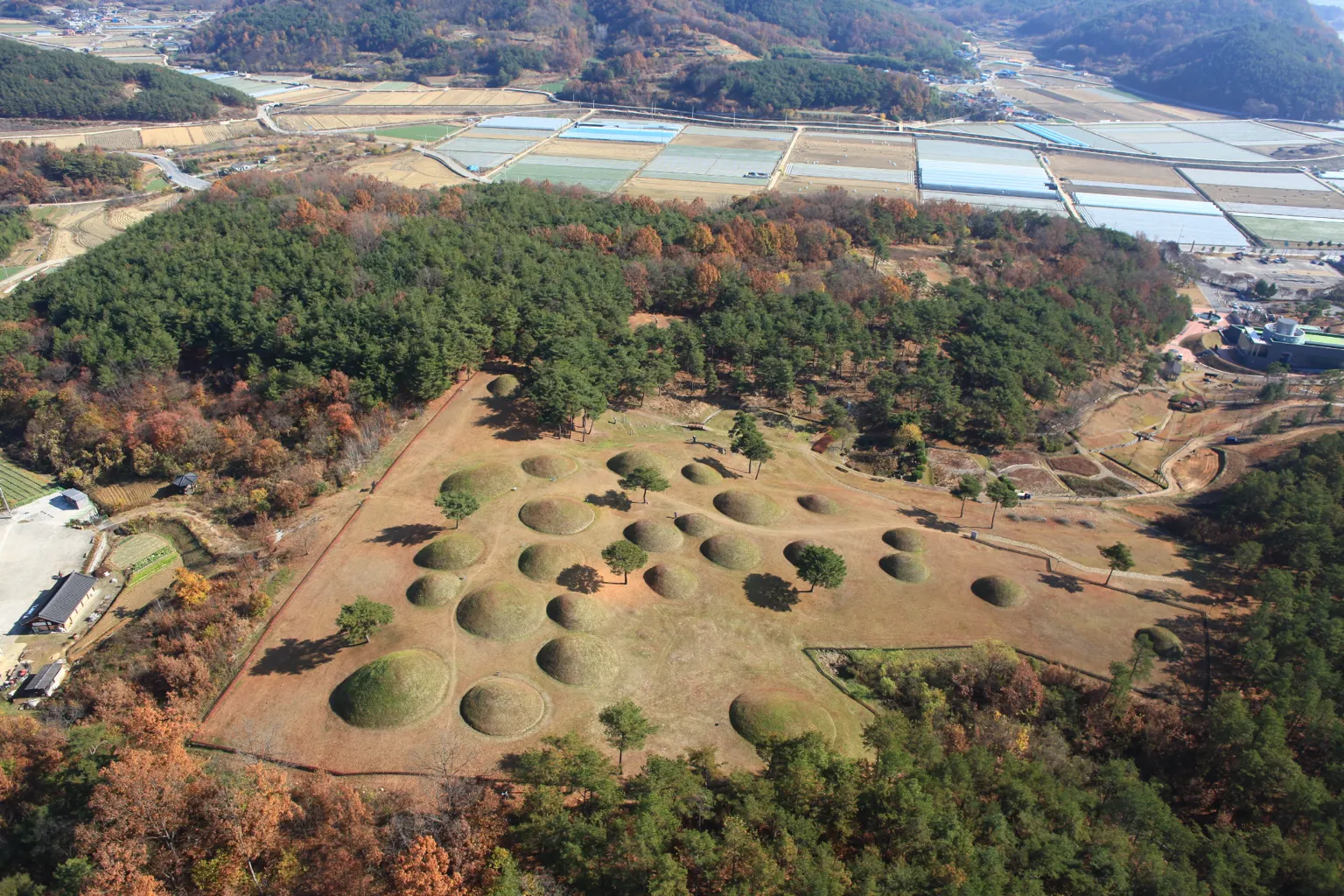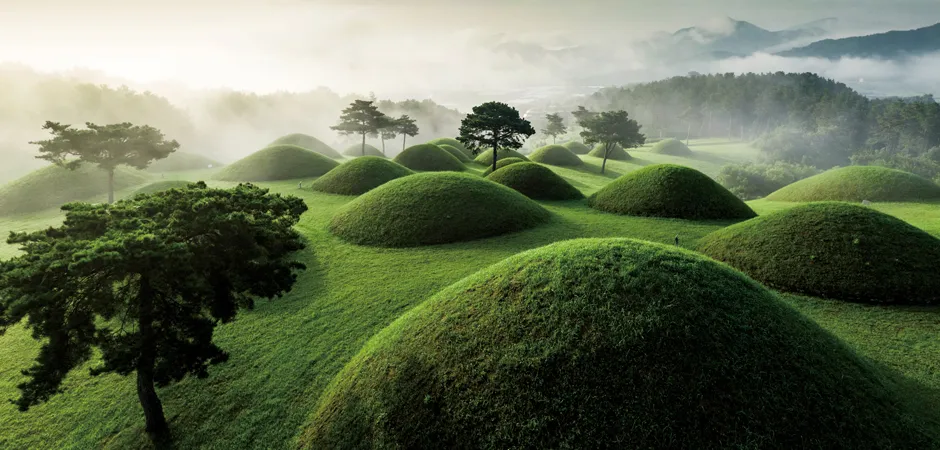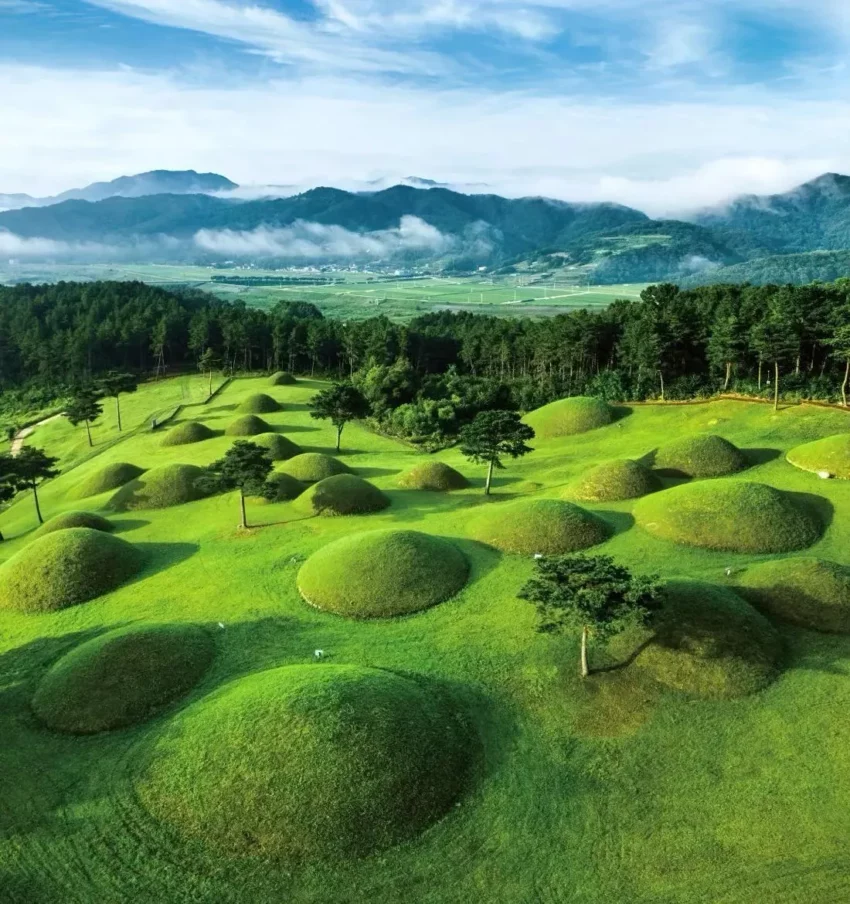Okjeon Tumuli: The Jade Fields of Daraguk’s Elite
Nestled in the rolling hills of Hapcheon County, in South Korea’s Gyeongsangnam-do Province, lies a cemetery steeped in history—the Okjeon Tumuli. The name “Okjeon” translates to “jade fields,” inspired by both the abundance of jade beads found within the cemetery and the name of the local village. This site, once hidden beneath a dense canopy of trees, now stands as a crucial piece of the historical puzzle that reveals the life and times of the Daraguk ruling class from the 4th to the mid-6th century AD.
Get your dose of History via Email
A Window into the Gaya Confederacy
The Okjeon Tumuli is more than just a burial site; it’s a gateway to understanding the Daraguk, a Gaya polity whose existence was once only known through ancient texts. Archaeological excavations in the 1980s unveiled this cemetery, offering tangible evidence of Daraguk’s geographical location and its historical significance. With 53 mounded tombs of varying sizes, the cemetery provides insight into the evolving burial practices of the time. Initially, wooden chamber burials were the norm, but by the mid-6th century, the dominant style had shifted to stone-lined chambers and corridor-chamber tombs.

A Crossroads of Culture and Craftsmanship
Strategically located near the Hwanggang River, the Okjeon cemetery was at the heart of Daraguk’s extensive trade network. This position made it a melting pot of cultural influences and a hub for the exchange of goods and ideas. The evolution of tomb construction at the site reflects this dynamic interaction. Some stone-lined chamber burials here feature separate chambers for the deceased and for burial goods, a design reminiscent of those found in the Geumgwangaya area. Others, with their elongated shapes, show the influence of Daegaya traditions.
The artifacts uncovered from these tombs tell a story of a society that was not only well-connected but also skilled in metalcraft. Military objects like large swords, armor, and horse trappings have been found in significant quantities. Among these, an iron sword adorned with dragon and phoenix designs and a gilt-bronze helmet from Tomb No. M3 stand out for their intricate craftsmanship. These items, along with a gilt-bronze crown from the Silla Kingdom and a glass cup from Central Asia, highlight the far-reaching trade relations Daraguk maintained, stretching from neighboring kingdoms to distant lands.

The Legacy of Okjeon Tumuli
Designated as Historic Site No. 326 in 1988, the Okjeon Tumuli remains a vital link to the past. The site covers an area of 14.47 hectares and serves as a testament to the power and influence of the Daraguk ruling class. The shift in burial practices—from wooden chambers to more elaborate stone-lined and corridor-chamber tombs—reflects the changing social dynamics and the increasing complexity of Gaya society during this period.
Unearthing History
The Okjeon Tumuli offers a rare glimpse into the life of the Gaya Confederacy, particularly the Daraguk polity. The cemetery’s strategic location, the richness of its grave goods, and the evolution of its burial practices all contribute to its importance as an archaeological and historical site. As researchers continue to study the artifacts and tombs, the Okjeon Tumuli will undoubtedly yield more secrets, deepening our understanding of this ancient civilization and its connections to the broader world.
Visiting the Okjeon Tumuli is not just a journey into the past; it’s an exploration of a society that, though long gone, still speaks to us through the stones and treasures it left behind.
Sources:

